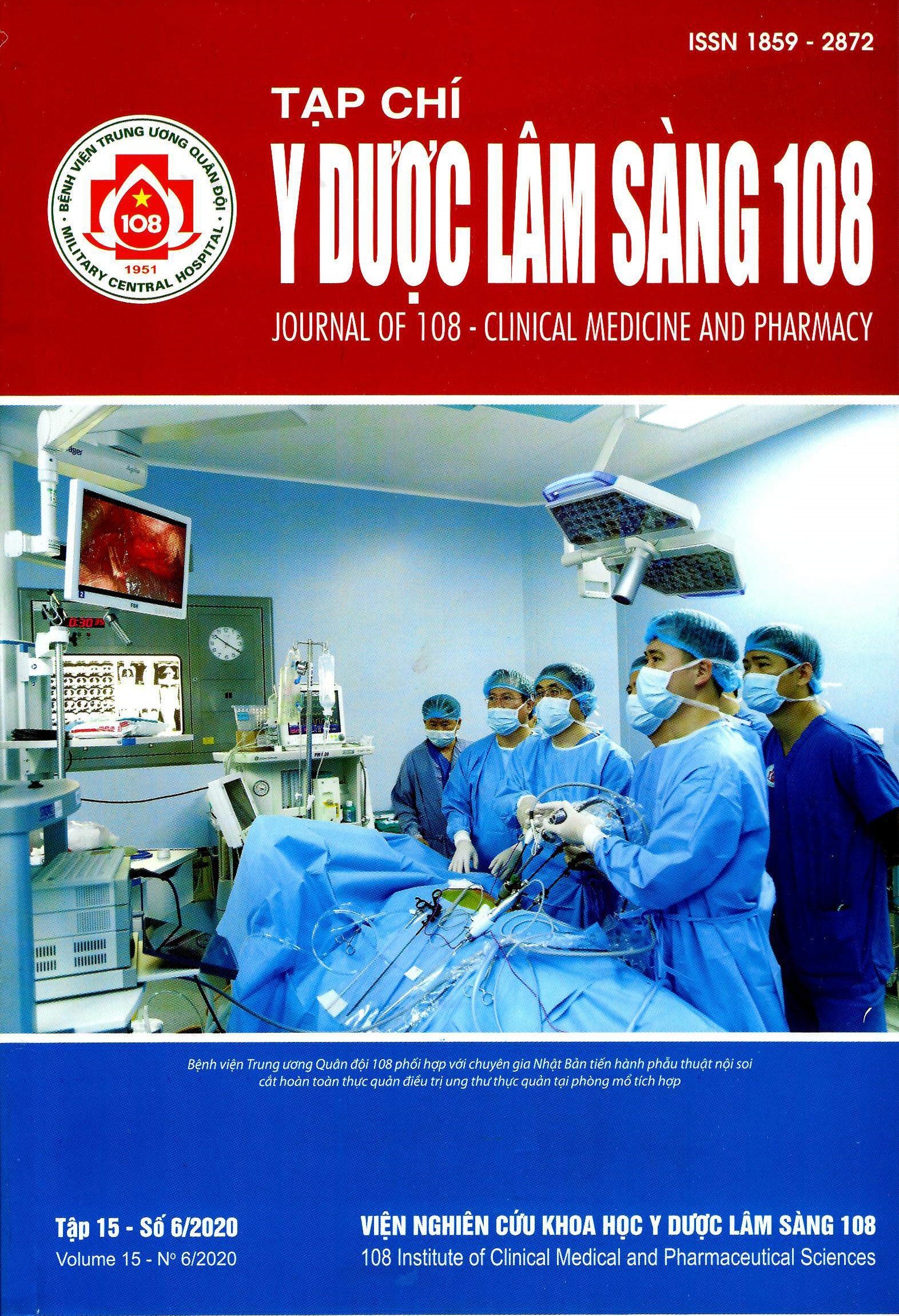The long-term results of short segment screw fixation with transforaminal interbody fusion in treatment of thoracolumbar burst fracture Denis IIB
Main Article Content
Keywords
Abstract
Objective: To evaluate the long-term outcomes of short segment pedicle screw fixation with transforaminal interbody fusion. Subject and method: A prospective study was performed the patients with isolated unstable thoracolumbar burst fractures treated by posterior short segment pedicle screw fixation and transforaminal thoracolumbar interbody fusion at 108 Military Central Hospital between January 2013 and January 2017. All patients were followed up for a minimum of 1 year. Demographic data, neurologic status, loss of anterior vertebral body heights, vertebral sagittal and regional sagittal angle were analysed at preoperative, after surgery, and at last follow up. Treatment-related complications were recorded. Result: There were 36/40 patients who met the inclusion and exclusion criteria with a mean follow-up duration of 53.3 months (range, from 17 to 73 months). The mean operative time was 117.6 minutes (range, from 90 to 165). The post-operative radiographs demonstrated a good reduction of kyphotic deformity and it was well maintained until last follow-up. There were 9/36 patients with incomplete neurological deficit was improved one to two ASIA grades. 27 patients without paraplegia on admission remained neurological intact after surgery. Conclusion: Short segment pedicle screw fixation with transforaminal interbody fusion is a surgical method had good long-term outcomes for treatment of thoracolumbar burst fractures, Denis IIB. The good bone union was 91.7% and the hardware failure was 16.7%.
Article Details
References
2. Aono H, Ishii K, Takenaka S et al (2019) Risk factors for a kyphosis recurrence after short-segment temporary posterior fixation for thoracolumbar burst fractures. J Clin Neurosci 66: 138-143.
3. Choi WS, Kim JS, Ryu KS et al (2016) Minimally invasive transforaminal lumbar interbody fusion at L5-S1 through a unilateral approach: Technical feasibility and outcomes. BioMed research international 2518394-2518394.
4. Dai LY, Wang XY and Jiang LS (2008) Evaluation of traumatic spinal canal stenosis in thoracolumbar burst fractures. A comparison of three methods for measuring the percent canal occlusion. Eur J Radiol 67(3): 526-530.
5. Kim BG, Dan JM and Shin DE (2015) Treatment of thoracolumbar fracture. Asian Spine J 9(1): 133-146.
6. Liao JC and Fan KF (2017) Posterior short-segment fixation in thoracolumbar unstable burst fractures - Transpedicular grafting or six-screw construct?. Clin Neurol Neurosurg 153: 56-63.
7. Rajasekaran S, Kanna RM and Shetty AP (2015) Management of thoracolumbar spine trauma: An overview. Indian J Orthop 49(1): 72-82.
8. Rosenthal BD, Boody BS, Jenkins TJ et al (2018) Thoracolumbar burst fractures. Clin Spine Surg 31(4): 143-151.
9. Schmid R, Krappinger D, Blauth M et al (2011) Mid-term results of PLIF/TLIF in trauma. Eur Spine J 20(3): 395-402.
10. Wang J and Lui P (2015) Analysis of surgical approaches for unstable thoracolumbar burst fracture: minimum of five year follow-up. J Pak Med Assoc 65(2): 201-205.
11. Wang L, Li J, Wang H et al (2014) Posterior short segment pedicle screw fixation and TLIF for the treatment of unstable thoracolumbar/lumbar fracture. BMC Musculoskelet Disord 15: 40.
 ISSN: 1859 - 2872
ISSN: 1859 - 2872
